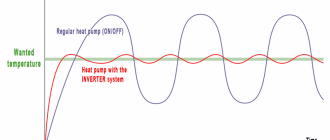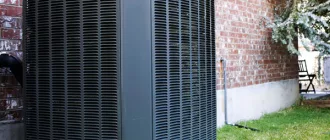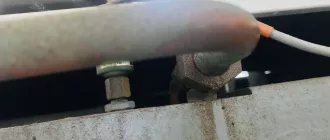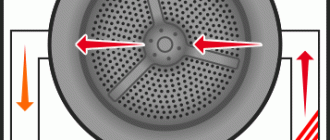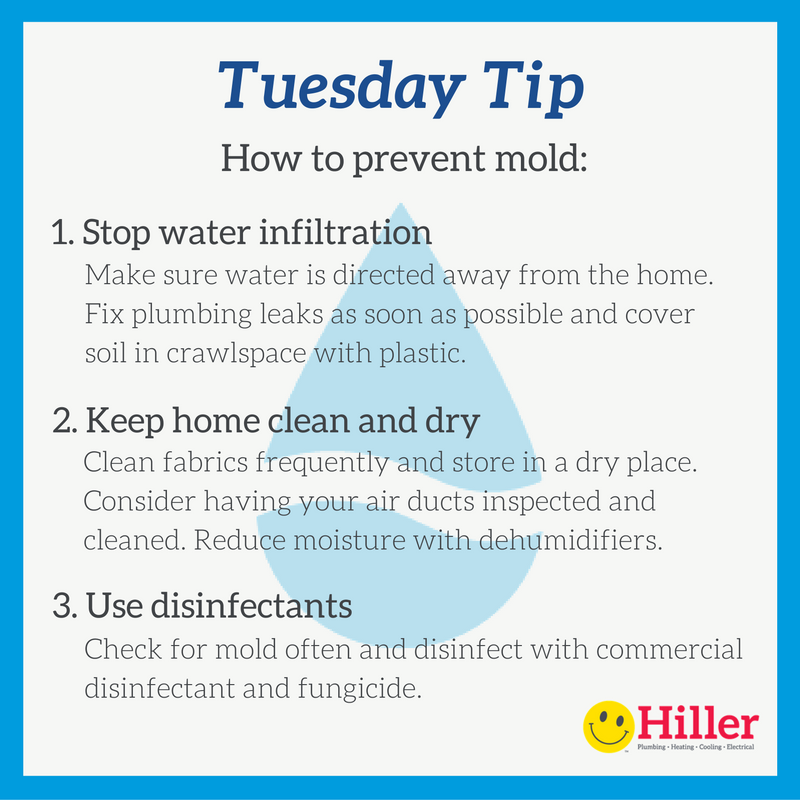
How to Lower the Humidity in Your Home in the Summer
Living in a humid climate can be quite challenging, especially during the summer months. Excessive humidity can lead to a variety of issues, including mold growth, musty odors, and even damage to your furniture and belongings. To condition your home and create a comfortable living environment, it is essential to find effective ways to reduce humidity and keep it at a lower level.
One of the most straightforward methods to lower humidity in your home is to improve the air circulation. By opening windows and using fans, you can allow fresh air to flow through your house and push out the humid air. Additionally, using an air conditioner can help to cool the air and remove excess moisture.
Another effective solution is to invest in a dehumidifier. These devices are designed to extract moisture from the air, helping to reduce humidity levels in your home. They are particularly useful in areas that are prone to high humidity, such as basements and bathrooms. It is recommended to place the dehumidifier in an area with the highest humidity to achieve the best results.
By following these tips and implementing effective methods to reduce humidity in your home, you can create a more comfortable living environment during the summer months. Lowering the humidity not only helps to prevent mold and mildew growth but also protects your furniture and promotes better air quality. Remember to take the necessary steps to keep your home’s humidity in check and enjoy the benefits of a well-conditioned living space.
Control Humidity Levels: Why it Matters
Lower humidity levels in your home can have several benefits, especially during the summer months. Excess moisture in the air can make your living space feel uncomfortable and can also create an environment that is ideal for the growth of mold and mildew. High levels of humidity can also make it more difficult to cool your home and can put a strain on your air conditioning system.
By taking steps to reduce humidity, you can improve the condition of your home and create a more comfortable environment. One of the most effective ways to accomplish this is by using a dehumidifier. A dehumidifier is a device that extracts moisture from the air, helping to lower the humidity level in your home.
Having a lower humidity level can make your home feel cooler, even without using the air conditioner. It can also help prevent the growth of mold and mildew, which can be harmful to your health. Additionally, by reducing the humidity in your home, you can help your air conditioning system work more efficiently, reducing energy consumption and potentially saving money on your utility bills.
Overall, controlling the humidity levels in your home is important for creating a comfortable and healthy living environment. Using a dehumidifier can be an effective way to reduce humidity during the summer months and keep your home in top condition.
Common Causes of High Indoor Humidity
High indoor humidity can be a common issue during the summer months. Here are some of the most common causes of high humidity in your home:
- Poor ventilation: Insufficient airflow can cause humidity to build up in your home. Make sure that your vents are clear and that air can circulate freely.
- Air conditioning issues: If your air conditioner is not functioning properly or is not the right size for your space, it may struggle to effectively condition the air and lower humidity levels.
- Moisture sources: Indoor activities such as cooking, showering, and even doing laundry can release moisture into the air. Be mindful of these activities and try to ventilate the area or use exhaust fans to reduce moisture buildup.
- Leaky pipes or appliances: Any sources of water leaks can contribute to high humidity levels. Check for leaks under sinks or around appliances like refrigerators and washing machines, and repair them promptly.
- Lack of insulation: Poor insulation can allow warm, moist air to enter your home, causing humidity to rise. Insulate your home properly to prevent this problem.
If you find that high humidity is a recurring issue in your home, using a dehumidifier can be an effective solution. A dehumidifier extracts moisture from the air, helping to control humidity levels and create a more comfortable indoor environment.
The Importance of Proper Ventilation
Proper ventilation in your home plays a crucial role in reducing humidity and maintaining a comfortable living condition, especially during the summer months. When humidity levels rise, it creates a moist environment that can lead to various issues.
Excess moisture in the air can promote the growth of mold and mildew, which can be harmful to your health and damage your property. Mold spores can trigger respiratory problems and allergies, and they can also cause structural damage to the walls, ceilings, and furniture in your home.
By ensuring proper ventilation, you can effectively reduce the amount of moisture in the air. Ventilation systems help to circulate fresh air and remove stale, humid air from your home. This allows for better airflow, which helps to control humidity levels and prevent the negative effects of excess moisture.
There are several ways to improve ventilation in your home. Opening windows and doors to allow cross ventilation is a simple and effective method. Installing exhaust fans in bathrooms, kitchens, and laundry rooms can also help to remove moisture from these areas where it tends to accumulate.
Another option is to use a dehumidifier, which extracts moisture from the air and helps to maintain optimal humidity levels. Dehumidifiers are especially useful in areas with high levels of humidity or during humid summer months. They can be placed in specific rooms or used to dehumidify your entire home.
In addition to reducing humidity, proper ventilation also helps to improve the overall air quality in your home. It helps to remove potentially harmful pollutants, such as volatile organic compounds (VOCs) and odors, and brings in fresh outdoor air. This can create a healthier living environment for you and your family.
Overall, maintaining proper ventilation in your home is essential for reducing humidity and creating a comfortable living condition. By ensuring good airflow and incorporating ventilation systems, you can effectively control moisture levels and prevent issues caused by excess humidity. So don’t overlook the importance of proper ventilation, especially during the humid summer months.
Benefits of Air Conditioning in Reducing Humidity
Air conditioning is a highly effective way to reduce humidity levels in your home during the summer months. While a dehumidifier can also help lower moisture levels, an air conditioning system offers several additional benefits.
One of the primary benefits of air conditioning is that it not only cools the air but also removes moisture from it. As the air circulates through the system, it passes over the evaporator coil, which is filled with a cold refrigerant. This process causes the moisture in the air to condense and collect on the coil, effectively reducing the humidity in your home.
By reducing humidity, air conditioning helps create a more comfortable indoor environment. High humidity can make the air feel heavy and sticky, leading to discomfort and difficulty in breathing, particularly for those with respiratory issues. Air conditioning helps to regulate humidity levels and create a cooler and drier atmosphere, making it easier to breathe and improving overall comfort.
Furthermore, air conditioning can help prevent the growth of mold and mildew in your home. Mold and mildew thrive in damp environments, often caused by high humidity. By reducing humidity levels, air conditioning inhibits the growth and spread of mold and mildew, helping to maintain a healthier indoor environment.
In addition to improving comfort and preventing mold growth, air conditioning can also help protect your home and belongings. Excess humidity can damage furniture, woodwork, and electronic equipment. By keeping humidity levels low, air conditioning helps to preserve the longevity of your home and personal belongings.
In conclusion, air conditioning provides a multitude of benefits in reducing humidity in your home during the summer. It not only cools the air but also helps to lower moisture levels, creating a more comfortable and healthier indoor environment. So, consider installing or utilizing your air conditioning system to effectively reduce humidity in your home.
Using Dehumidifiers: How They Work
When humidity levels rise in your home, especially during the summer, it can lead to discomfort and other issues. Fortunately, dehumidifiers provide an effective solution to lower the moisture levels in your living space.
A dehumidifier is a device specially designed to remove excess humidity from the air. It works by pulling in the humid air, cooling it down, and condensing the moisture. The condensed moisture is then collected in a reservoir or drained out of the dehumidifier.
By removing the excess moisture from the air, dehumidifiers help create a more comfortable living environment. They can also help prevent the growth of mold and mildew, which thrive in humid conditions and can cause health problems.
Using a dehumidifier is straightforward. Most models have a control panel that allows you to adjust the desired humidity level. Once set up, the dehumidifier will automatically monitor the humidity and turn on and off as needed to maintain the chosen humidity level.
It’s important to note that dehumidifiers are most effective in enclosed spaces, such as bedrooms, living rooms, or basements. If you have a larger home, you may need multiple dehumidifiers to cover all the areas.
To get the most out of your dehumidifier, make sure to place it in a central location and keep the doors and windows closed to create a controlled environment. Regularly empty the collected moisture and clean or replace the filters to ensure optimal performance.
In conclusion, dehumidifiers are a valuable tool to reduce humidity levels in your home during the summer. By using a dehumidifier, you can create a more comfortable and healthier living condition by effectively lowering the moisture in the air.
Natural Ways to Reduce Humidity
Aside from using a dehumidifier, there are several natural ways to reduce moisture and lower humidity levels in your home during the summer.
One effective method is to condition the air by using natural moisture-absorbing substances. For example, placing bowls of uncooked rice or charcoal briquettes in areas with high humidity can help absorb excess moisture and reduce humidity levels in the room.
Another way to naturally reduce humidity is by improving ventilation. Open windows and doors to allow fresh air to circulate throughout your home. You can also use fans or install vents to improve airflow and encourage evaporation of moisture.
Using houseplants is another natural way to combat high humidity levels. Plants release moisture through a process called transpiration, which can help to reduce humidity in the air. Some recommended plants for reducing humidity include Boston ferns, peace lilies, and spider plants.
Last but not least, reducing the amount of moisture you generate in your home can significantly lower humidity levels. It is important to cover pots when cooking, use vent fans in bathrooms and kitchens, and hang wet clothes outside to dry rather than indoors.
By implementing these natural methods, you can effectively reduce humidity in your home during the summer without relying solely on a dehumidifier.
The Role of Houseplants in Humidity Control
During the summer months, when humidity levels tend to rise, it is important to find effective ways to reduce moisture in your home. While many people turn to dehumidifiers or air conditioning units to condition and lower the humidity, there is a natural and aesthetic solution that can also help: houseplants.
Houseplants have the ability to significantly reduce humidity in the air through a process called transpiration. Transpiration is the release of water vapor through plant leaves. As plants take in water through their roots, it travels up through the stems and reaches the leaves. Once in the leaves, the water is released into the air as vapor, effectively reducing the moisture content in the surrounding environment.
Not only do houseplants help reduce humidity, but they also improve air quality. Plants naturally absorb carbon dioxide and release oxygen, making them excellent natural air purifiers. Additionally, some houseplants have been found to remove harmful toxins from the air, such as formaldehyde and benzene, which can be found in common household products.
It is important to choose the right houseplants for humidity control. Plants with large leaves, such as ferns and peace lilies, tend to have a higher transpiration rate and are more effective at reducing humidity. Placing these plants strategically around your home, especially in rooms with higher moisture levels like bathrooms or kitchens, can help maintain a comfortable and dry indoor environment.
In conclusion, houseplants play a crucial role in humidity control during the summer months. They not only reduce humidity levels by releasing moisture into the air through transpiration, but they also improve air quality. By incorporating houseplants into your home, you can effectively reduce humidity and create a healthier and more comfortable living space.
Choosing the Right Size Dehumidifier for Your Home
During the summer months, excessive moisture in the air can lead to high humidity levels inside your home. To reduce humidity and create a more comfortable living condition, using a dehumidifier can be an effective solution.
When choosing a dehumidifier for your home, it’s important to select the right size to effectively remove moisture from the air. A dehumidifier that is too small may not be able to keep up with the humidity levels, while one that is too large may cycle on and off too frequently, wasting energy.
To determine the right size dehumidifier for your home, you need to consider the square footage of the space you want to dehumidify. Larger spaces require more powerful dehumidifiers, while smaller rooms may need a compact unit.
A general rule of thumb is to choose a dehumidifier that can remove around 30 pints of moisture per day for every 1,000 square feet. For example, if you have a 2,000 square foot home, you would need a dehumidifier that can remove about 60 pints of moisture per day.
However, other factors can also affect the humidity levels in your home. If your home has more moisture sources, such as multiple occupants, cooking, or showering, you may need a larger dehumidifier to keep up with the increased moisture production.
It’s also important to consider the climate and average humidity levels in your area. If you live in a particularly humid region, you may need a more powerful dehumidifier to effectively reduce humidity in your home.
Additionally, some dehumidifiers have built-in humidity sensors that can automatically adjust the moisture removal based on the current humidity levels. This can be a convenient feature as it ensures optimal performance without requiring constant manual adjustments.
In conclusion, choosing the right size dehumidifier for your home is essential to effectively reduce humidity levels during the summer. Consider the square footage of your space, additional moisture sources, climate, and humidity levels in your area to make an informed decision. With the right dehumidifier, you can create a more comfortable and healthier living environment by improving the air quality in your home.
How to Maintain and Clean Your Dehumidifier
Maintaining and cleaning your dehumidifier is crucial to ensure its optimal condition and efficiency in reducing moisture levels in your home during the hot and humid summer months. Here are some steps to help you maintain and clean your dehumidifier:
- Read the manufacturer’s instructions: Start by thoroughly reading the manufacturer’s instructions that accompanied your dehumidifier. This will provide you with specific guidelines on how to properly maintain and clean your particular model.
- Regularly clean the air filter: The air filter plays a vital role in trapping dust, allergens, and other particles from the air. Cleaning or replacing the air filter at least once a month or as recommended by the manufacturer will ensure optimal performance and prevent clogs.
- Clean the water collection bucket: Empty and clean the water collection bucket regularly to prevent the buildup of mold, mildew, and bacteria. Use warm soapy water or a mixture of water and vinegar to thoroughly clean the bucket. Rinse it well and let it dry before reinstalling it.
- Inspect the drain hose: If your dehumidifier has a drain hose, check it regularly for clogs or obstructions. Clear any debris, and ensure that the hose is properly connected and draining the water away from your home.
- Check the coils: Over time, the coils in your dehumidifier may collect dirt, dust, or other particles, which can affect its efficiency. Use a soft brush or vacuum cleaner with a brush attachment to gently clean the coils, removing any visible dirt or debris.
- Ensure proper placement: Proper placement of your dehumidifier is essential for effective moisture reduction. Make sure it is positioned away from walls or furniture, allowing sufficient airflow around the unit.
Following these maintenance and cleaning steps will help keep your dehumidifier in good condition and ensure that it efficiently reduces moisture levels in your home during the summer months. A well-maintained dehumidifier will keep the air in your home fresh and comfortable, helping you create a healthier living environment.
The Effects of Humidity on Your Home and Health
Excessive moisture in the air can have a significant impact on both your home and your health. High humidity levels can lead to a range of problems, including mold growth, musty odors, and damaged wood and furniture.
When the humidity in your home is too high, it creates the ideal conditions for mold to thrive. Mold can grow on walls, ceilings, carpets, and other surfaces, and it releases spores into the air that can cause respiratory issues and allergies. Additionally, mold can cause structural damage to your home, leading to costly repairs.
Humidity can also affect the condition of your furniture and woodwork. Excess moisture in the air can cause wood to warp, crack, or rot, while upholstered furniture can develop mold and mildew. These damages can significantly reduce the lifespan of your belongings and result in expensive replacements.
Not only does high humidity impact your home, but it can also have negative effects on your health. Breathing in humid air can make it difficult to cool down, leading to discomfort, fatigue, and increased sweating. It can also exacerbate respiratory conditions like asthma and allergies, making it harder to breathe.
To combat the negative effects of high humidity, it is essential to reduce the moisture levels in your home, especially during the summer months. One effective way to do this is by using a dehumidifier, which removes excess moisture from the air. Additionally, proper ventilation and sealing any leaks or cracks in your windows and walls can help control humidity levels.
By taking steps to reduce humidity in your home, you can protect both your property and your health. Maintaining a comfortable and healthy indoor environment is important for your overall well-being.
The Impact of Humidity on Furniture and Electronics
During the summer months, high humidity levels can have a detrimental effect on both furniture and electronics in your home. Excessive moisture in the air can cause significant damage to these items if not properly addressed.
Furniture, especially wooden pieces, can be particularly vulnerable to the effects of humidity. When the air is too humid, wood can absorb the moisture and expand, leading to warping and cracking. This can result in furniture that is no longer structurally sound and may require costly repairs or replacement.
Electronics, on the other hand, can be negatively impacted by high humidity levels as well. Moisture in the air can corrode electronic components, causing them to malfunction or even completely fail. This can be especially problematic for sensitive equipment such as computers, televisions, and speakers.
To minimize the impact of humidity on your furniture and electronics, it is important to maintain a controlled indoor environment. Using a dehumidifier can help to lower the humidity levels and reduce the risk of damage. Additionally, ensuring proper ventilation and air circulation in your home can also help to keep humidity levels in check.
It is also recommended to store electronic devices in areas with lower humidity levels, such as air-conditioned rooms or using moisture-absorbing products to protect them from moisture damage. For wooden furniture, applying a protective coating or using a humidifier can help to prevent excessive moisture absorption.
By taking proactive steps to reduce humidity in your home, you can protect your furniture and electronics from the damaging effects of high moisture levels. This will not only prolong the lifespan of these items but also save you money in the long run.
Signs You Need to Reduce the Humidity in Your Home
During the summer months, it is common for the air humidity to be higher, which can lead to discomfort and potential health issues. Here are some signs that indicate you may need to lower the humidity in your home:
- Condensation on windows: If you notice droplets of water forming on your windows, it is a clear sign that the humidity levels in your home are too high. This can lead to mold and mildew growth if left unaddressed.
- Musty odor: Excess humidity can cause a musty smell in your home. If you constantly notice this odor, it is a sign that there is too much moisture in the air.
- Wet stains on walls or ceilings: If you see wet stains on your walls or ceilings, it indicates that moisture is seeping through from the outside. This can be a result of high humidity levels.
- Difficulty breathing: High humidity can make it harder to breathe, especially for individuals with respiratory issues. If you notice an increase in breathing problems during the summer, it may be due to excessive humidity.
- Constantly running air conditioning: If your air conditioning seems to be running constantly without effectively cooling your home, it may be because the humidity levels are too high. Lowering the humidity can help your air conditioning work more efficiently.
If you notice any of these signs in your home, it is important to take steps to reduce the humidity. Using a dehumidifier, improving ventilation, and sealing any leaks or cracks are effective ways to reduce humidity and create a more comfortable living environment.
The Connection Between Humidity and Allergies
Humidity levels in your home can have a significant impact on your allergies. High humidity creates the perfect environment for mold, dust mites, and other allergens to thrive. These allergens can trigger allergic reactions and worsen symptoms for those with allergies and asthma.
To reduce humidity in your home and alleviate allergy symptoms, consider using a dehumidifier. A dehumidifier helps to remove excess moisture from the air, creating a drier and less favorable environment for allergens to grow.
In addition to using a dehumidifier, it’s important to properly maintain your home’s air conditioning system. Air conditioners not only cool the air but also help to lower humidity levels. Regularly check and clean your air conditioner’s filters to ensure they are working effectively in removing excess moisture from the air.
During the summer months, when humidity tends to be higher, it’s essential to take proactive measures to reduce humidity in your home. Lowering humidity levels can help reduce the presence of allergens, providing relief for those who suffer from allergies and asthma.
| – Minimizes the growth of mold and mildew |
| – Reduces dust mite populations |
| – Helps alleviate allergy symptoms |
| – Improves indoor air quality |
Humidity Control for Basements and Crawl Spaces
Basements and crawl spaces are notorious for high humidity levels, especially during the summer months. This can create an uncomfortable living environment and lead to various issues such as mold and mildew growth, musty odors, and even structural damage. It is essential to take steps to condition these areas and reduce moisture to maintain a healthy home.
Here are some effective ways to lower humidity in basements and crawl spaces:
1. Seal air leaks: Inspect the areas for any cracks or openings that allow outside air into the space. Seal these gaps using caulk or weatherstripping to prevent excess moisture from entering.
2. Improve ventilation: Poor airflow can contribute to high humidity levels. Ensure you have proper ventilation by opening windows, installing vents, or using fans to circulate the air. This will help to reduce moisture in the space.
3. Install a dehumidifier: A dehumidifier is an excellent solution for controlling humidity in basements and crawl spaces. Choose a unit with the appropriate capacity for the size of the area. Run the dehumidifier regularly to extract excess moisture from the air.
4. Use a moisture barrier: Consider installing a moisture barrier, such as a vapor barrier or waterproofing paint, on the walls and floors of your basement or crawl space. This will help to prevent moisture from seeping into the space.
5. Address plumbing issues: Leaking pipes or plumbing fixtures can contribute to high humidity levels. Inspect the plumbing in your basement or crawl space and fix any leaks promptly to prevent further moisture buildup.
By implementing these measures, you can effectively reduce humidity in your basement or crawl space during the summer months. This will create a more comfortable and healthy living environment for you and your family.
Understanding the Relationship Between Humidity and Energy Efficiency
When it comes to reducing humidity in your home during the summer, understanding the relationship between humidity and energy efficiency is crucial. Excessive moisture in the air can have a significant impact on your home’s energy consumption, making it harder for your air conditioning system to lower the humidity and cool the air.
High humidity levels can make your home feel warmer than it actually is, causing your air conditioner to work harder and consume more energy to condition the air. This additional energy usage not only increases your utility bills but also puts a strain on your cooling system, leading to potential breakdowns and repairs.
By taking steps to reduce humidity levels in your home, you can enhance energy efficiency and save on cooling costs. One effective way to lower humidity is to use a dehumidifier. A dehumidifier helps to extract excess moisture from the air, reducing humidity levels and making your home feel more comfortable.
In addition to using a dehumidifier, other simple measures can be taken to reduce humidity and improve energy efficiency. For example, ensuring proper ventilation in your home through the use of exhaust fans in bathrooms and kitchens can help remove excess moisture from the air. Additionally, sealing any leaks in your home’s windows, doors, and walls can prevent unwanted moisture from entering and further contributing to high humidity levels.
It’s important to note that maintaining an appropriate humidity level not only benefits energy efficiency but also has health benefits. Excessively high humidity can create a breeding ground for mold, mildew, and dust mites, which can trigger allergies and respiratory issues. By controlling the humidity in your home, you can create a healthier living environment for you and your family.
In conclusion, understanding the relationship between humidity and energy efficiency is essential to create a comfortable and cost-effective living space. By taking steps to reduce humidity, such as using a dehumidifier and improving ventilation, you can lower energy consumption, reduce utility bills, and improve indoor air quality. Don’t let high humidity levels affect your comfort and well-being during the summer months – take control and create a more energy-efficient home.
Q&A:
How does high humidity affect my home during the summer?
High humidity can cause a range of problems in your home during the summer. It can lead to mold and mildew growth, musty odors, damage to wooden furniture and flooring, and an uncomfortable and sticky environment.
What are some effective ways to reduce humidity in my home during the summer?
There are several effective ways to reduce humidity in your home during the summer. You can use a dehumidifier, ensure proper ventilation, use exhaust fans in bathrooms and kitchens, fix any leaky pipes or faucets, and keep your home well-insulated.
How does a dehumidifier work in reducing humidity in my home?
A dehumidifier works by drawing in the air from your home and passing it over cooled coils. This causes the moisture in the air to condense into water, which is then collected in a reservoir. The dehumidified air is then reheated and released back into your home with lower humidity levels.
Can using exhaust fans in bathrooms and kitchens really help in reducing humidity?
Yes, using exhaust fans in bathrooms and kitchens can be very effective in reducing humidity. These fans help to remove the moist air produced by activities such as showering or cooking, preventing it from spreading to other areas of your home and causing high humidity levels.
How can I ensure proper ventilation in my home to reduce humidity?
To ensure proper ventilation in your home, you can open windows and doors to allow fresh air to circulate. You can also install vents or vents fans in areas that tend to have high humidity, such as the bathroom or laundry room. Additionally, using ceiling fans can help to promote air movement and reduce humidity.



